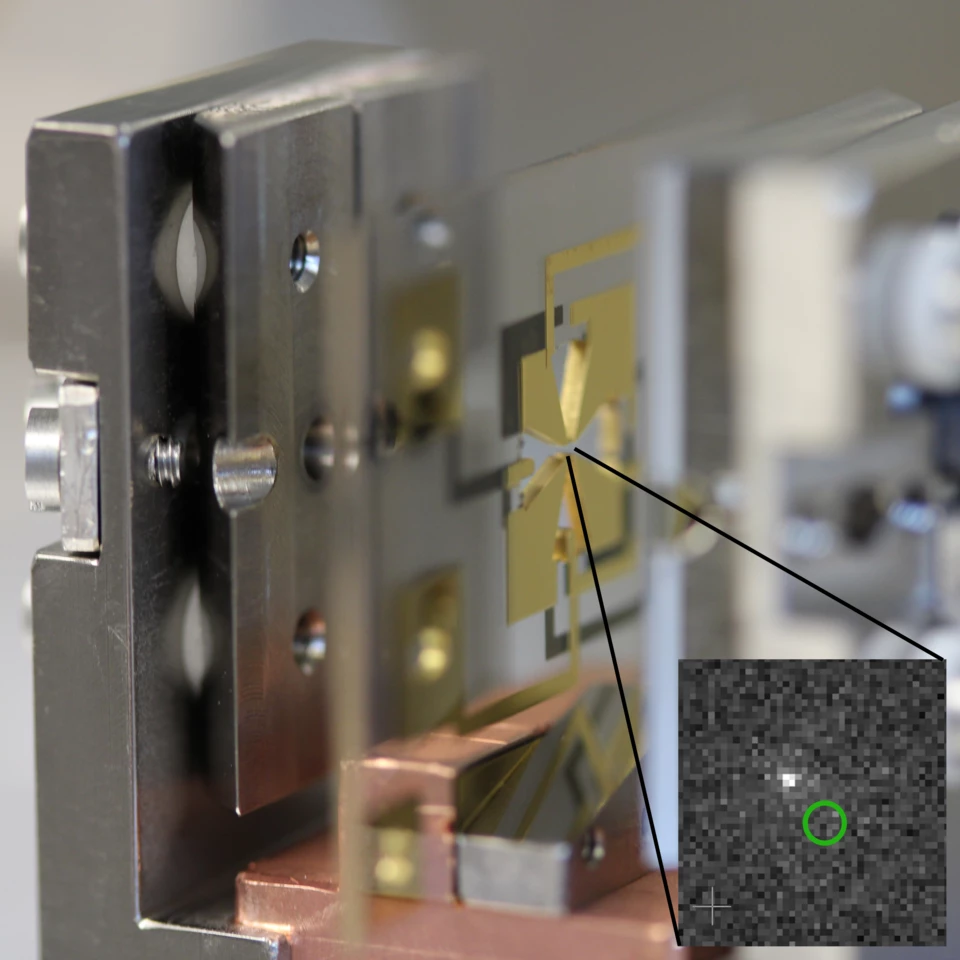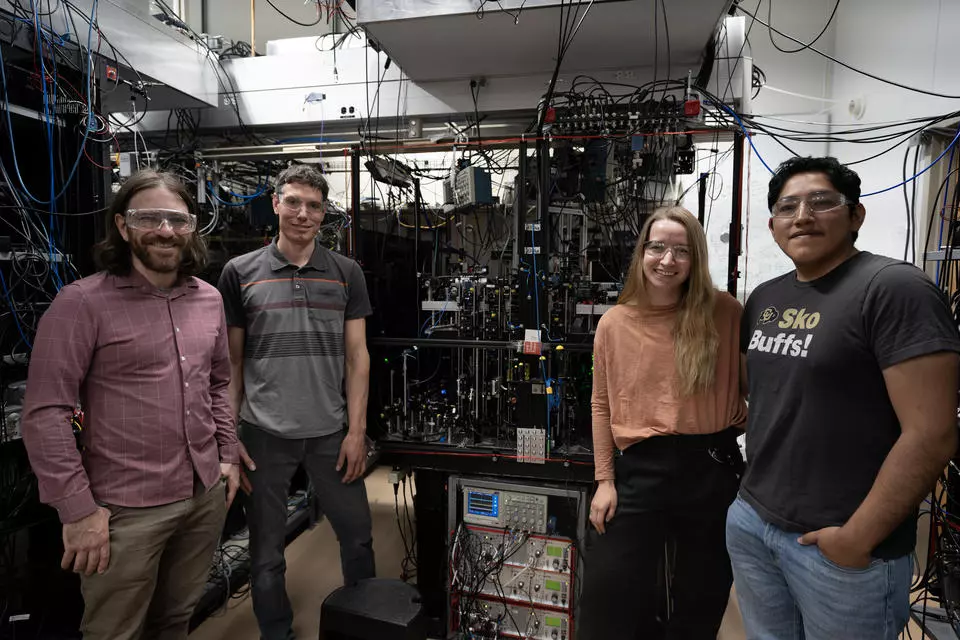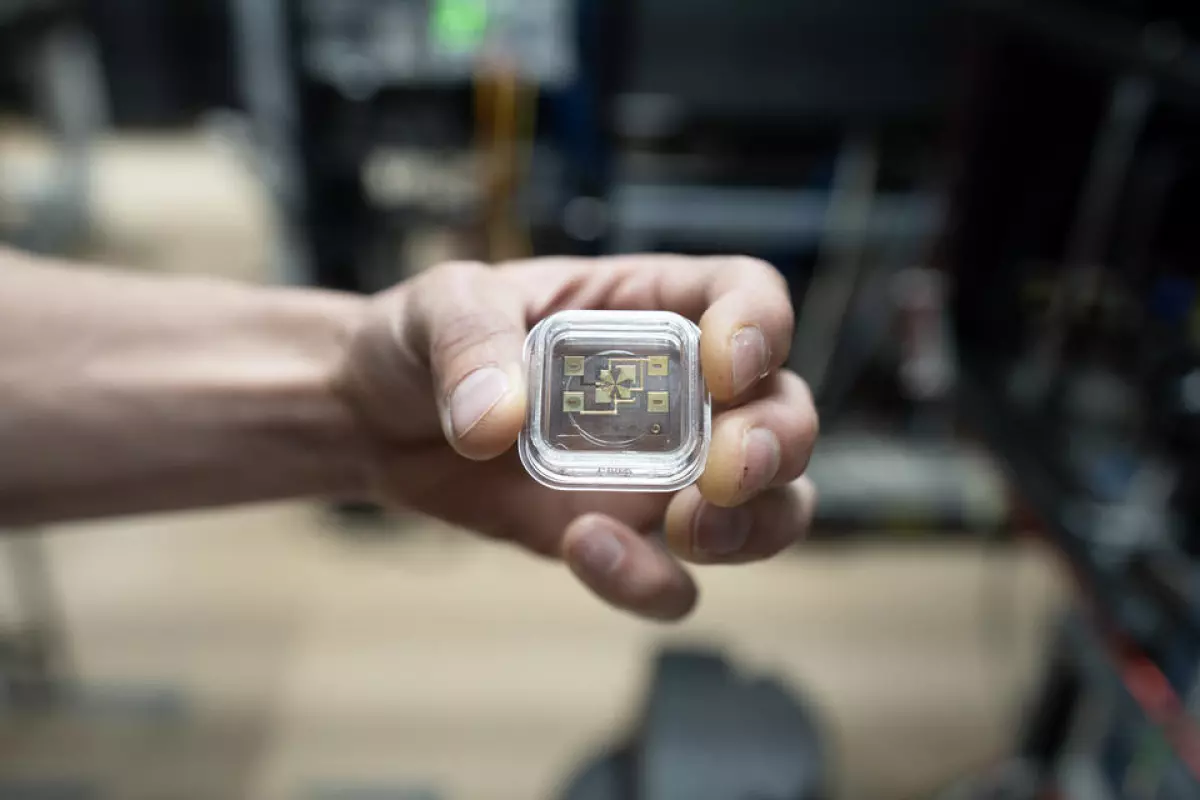If, like me, you can't go a day without making sure your watch is synced to the second, you'll be delighted to learn that a new atomic clock has broken the record with an accuracy of 5.5 x 10⁻¹⁹ – gaining or losing one second in 57.6 billion years.
Developed by a team at the US National Institute of Standards and Technology (NIST) as the result of 20 years of research, the new clock isn't just more accurate than any built before, it beats the record by 41% and is 2.6 times more stable than its predecessors.
To put it another way, you've got a clock that is accurate to within a second over several times the current age of the universe.
This particular clock is technically an ion clock, which is different from the more common atomic clocks that are based on measuring the resonant frequencies of a single cesium atom to regulate time keeping. Instead, the ion clock is a type of atomic clock that does its job by using a pair of quantum-linked ions for greater accuracy and stability.

In this case, the new clock uses an ion of aluminum linked to an ion of magnesium, forming what is known as a quantum logic clock. In this, the aluminum ion has a high-frequency, stable "tick." Unfortunately, this tick can't be read directly by a laser beam as with a cesium atom, so while the clock is extremely accurate, it keeps the time a secret known only to its quantum self.
To get around this, the aluminum ion is linked to a magnesium ion. This is done by keeping the ions in what is called an ion trap, where they sit within a few micrometers of one another and interact through a shared electrostatic repulsion. This interaction allows the magnesium ion to act as a sort of receiver for the aluminum ion. It also helps to cool the aluminum ion as lasers cool and manipulate the magnesium ion.

The cooling bit is particularly important, since the ions have to be kept at a temperature of near absolute zero (approximately -273.15 °C, -459.67 °F). This, along with thicker diamond wafers and a new gold coating on the electrodes in the clock, helps to dampen down any unwanted micro-motions that would interfere with the readings. In addition, a special high-vacuum chamber had to be devised to keep hydrogen atoms from leaking in and even the laser had to be made super-stable by means of optical frequency combs that use combined lasers to achieve precisely the desired optical frequency.
In other words, it's all go on this job.
The purpose of constructing such an ultra-accurate clock is more than just setting new records. Modern technology is based heavily on precise clocks. In fact, the internet and modern navigation systems couldn't work without them. In addition, the NIST team sees new applications, including redefining the second to optical frequency standards, testing so-called physical constants to see if they actually change over time, measuring the Earth's gravity in minute detail by means of relativistic time dilation, improving quantum computing systems, and allowing for smaller, more rugged, and accurate GPS systems.
"It’s exciting to work on the most accurate clock ever," said Mason Marshall, NIST researcher. "At NIST we get to carry out these long-term plans in precision measurement that can push the field of physics and our understanding of the world around us."
The research was published in Physical Review Letters.
Source: NIST





